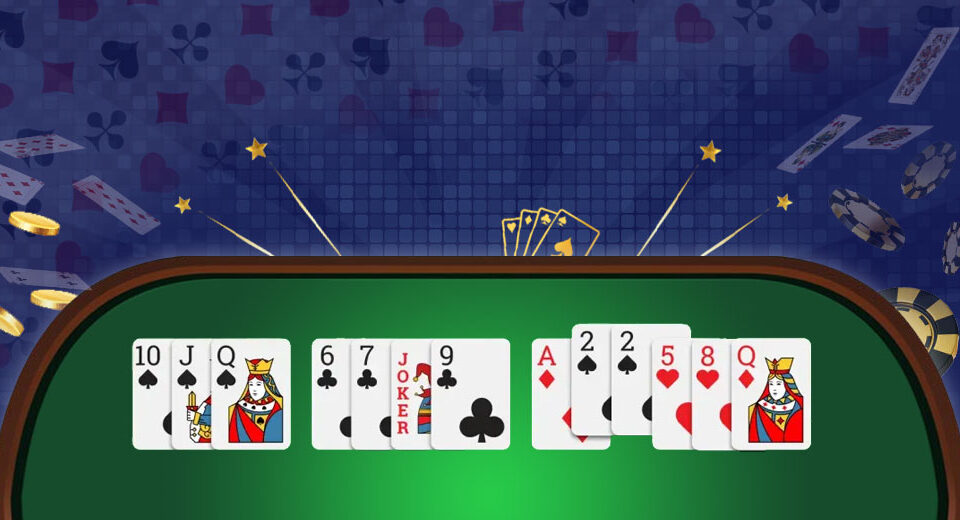Prioritizing Sequences vs Sets in Points Rummy
In the fast-paced world of Points Rummy, every move counts - especially the way you decide between forming sequences and sets. Unlike longer formats where patience is rewarded, Points Rummy demands speed, precision, and a clear focus on pure sequence formation from the start. One of the first decisions every player makes during a hand is whether to chase a sequence or invest in building a set. This decision shapes the outcome of the round and impacts how efficiently you can declare. Understanding when to prioritise sequences over sets - and vice versa - is the foundation for stronger performance in every online rummy game.
Importance of the Pure Sequence
In Points Rummy, you cannot declare a valid hand without at least one pure sequence. This rule alone should make pure sequences your top priority from the beginning. Without a pure sequence, even a perfectly formed hand with valid sets and impure sequences will still result in maximum penalty points. Start by identifying any cards that can naturally form a pure sequence without jokers. If you don’t see an immediate path, your next few draws and discards should focus purely on building this structure first. This is not just a rule - it’s your safety net.
Why Sets Are Risky Early On
While sets (three or four cards of the same rank with different suits) can help reduce point load, prioritising them early in the game is often risky. A set without a sequence doesn’t move you closer to declaration. In Points Rummy, holding onto unrelated cards for a potential set can clutter your hand and slow down your tempo. Especially in Indian rummy online, where every second counts, early set-building without a clear path to a sequence is a gamble that rarely pays off.
Balancing with the Joker Factor
Jokers are valuable tools in Points Rummy, but they can also be misleading. Many players get tempted to build impure sequences or sets using jokers early on. However, this is only useful once you’ve secured a pure sequence. Until that happens, use jokers cautiously - avoid using them in sets or impure sequences until your foundation is strong. The Indian rummy rules are clear: pure sequences cannot have jokers. Knowing when and where to place jokers is essential to making the right balance between sets and sequences.
Observation and Opponent Tracking
Another key factor in prioritising is analysing your opponents’ discards. If you notice an opponent discarding multiple cards from a suit you're building a sequence in, it’s safe to assume those cards won't reappear. In such cases, you might pivot towards a set if your hand supports it. However, this should only be done after forming at least one valid sequence - preferably pure. This adjustment requires quick judgment and strong memory, traits that develop through regular play and focused strategy in the Indian rummy card game.
Dealing with a Difficult Hand
Sometimes, your initial draw may not offer any easy sequences. In this case, try to create semi-flexible groups - cards that could either go into a sequence or set, depending on the next draw. For example, holding 9♦, 9♠, and 10♦ allows flexibility. If 8♦ shows up, you can drop 9♠ and build a sequence. If not, wait for another 9 and convert into a set. This adaptive planning helps you stay ready to switch strategy without wasting moves or holding unnecessary points.
Speed vs Safety
Points Rummy puts immense pressure on speed. But speed shouldn’t lead to shortcuts. Rushing to form sets and impure sequences before a pure sequence is confirmed can backfire. Safety - through sequences - should come first. Once you lock in a pure sequence, the rest of your hand becomes easier to shape. At this point, going for a set to quickly reduce points and push for a declaration is a smart step. Sequence first, sets later - that’s the order that prevents heavy penalties and wasted rounds.
Strategic Drop as a Reset
If your hand after the first draw looks like it won’t easily support a sequence, consider taking a first drop. The penalty is minimal, and it avoids a higher loss later. This drop gives you a fresh hand in the next round, where you can focus again on building sequences from the start. Experienced players know when to fold early and when to push. Dropping wisely is often the smarter move than clinging to a hand just to build a set without sequence support.
Conclusion: Sequences build your path to safety
In Points Rummy, prioritising sequences - especially a pure one - isn’t just a matter of preference, it’s a necessity dictated by the game’s rules. Sets are helpful but secondary, and focusing on them too early can leave you vulnerable to heavy losses. Your aim should always be to establish a pure sequence as early as possible, adapt based on the draw, and use jokers strategically only after securing the essentials. This layered decision-making between sequences and sets is what separates an efficient player from a struggling one. Learn to lead with sequences, and the rest will fall into place naturally.




